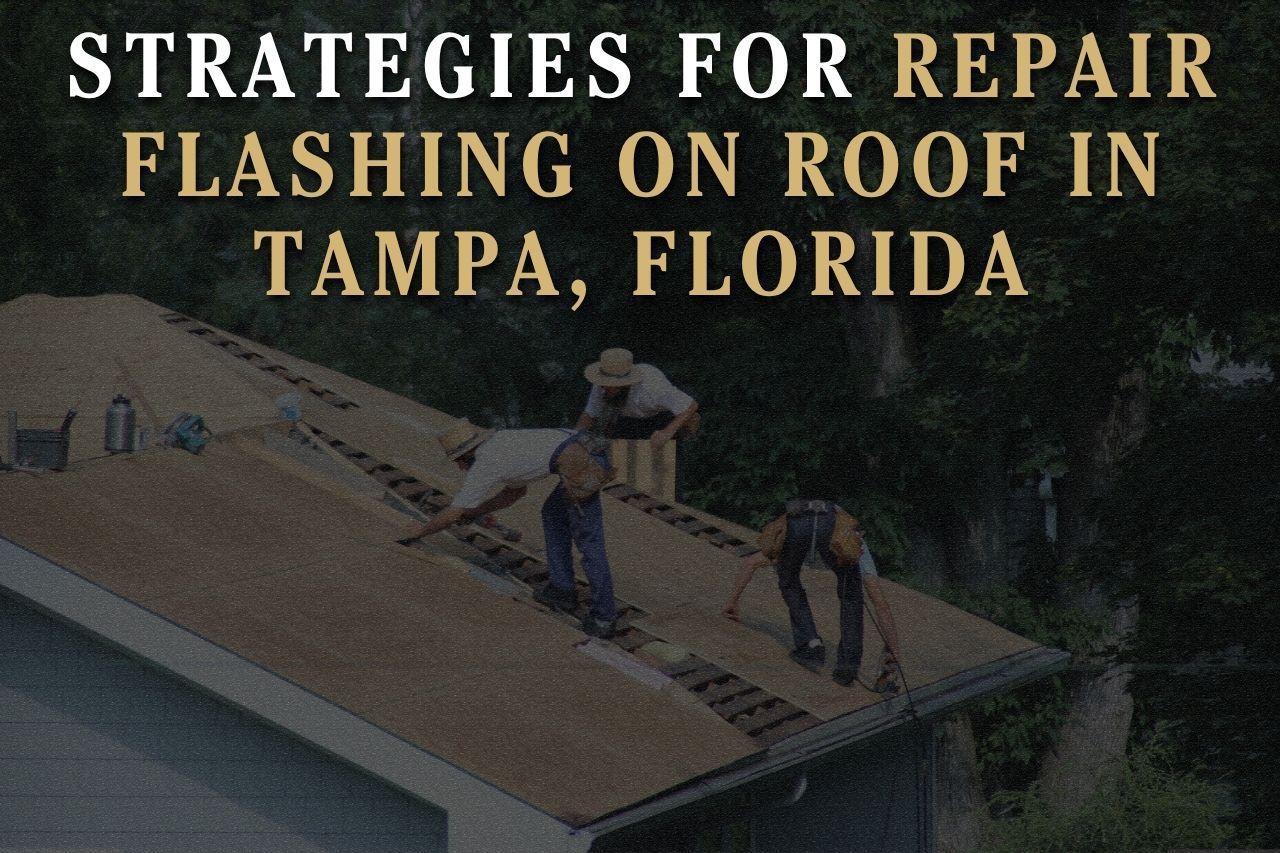Strategies for Repair Flashing on Roof in Tampa, Florida
8/8/2025 | 4 min read

Roof flashing plays a critical role in keeping water out of your home by sealing the vulnerable areas where the roof meets walls, chimneys, or vents. In Tampa, where heavy rains and strong winds are common during hurricane season, damaged flashing can quickly lead to roof leaks, struXctural problems, and costly repairs. This guide outlines proven strategies for repairing roof flashing to ensure your home stays protected year-round.
Understanding Roof Flashing and Its Role
Flashing is typically made from materials such as aluminum, copper, or galvanized steel. Its main purpose is to redirect water away from joints, valleys, and roof penetrations. In Florida’s humid and storm-prone climate, the integrity of your flashing is just as important as the roofing material itself. Regular inspections can help catch early signs of corrosion, warping, or loosening.
Strategy 1: Perform a Thorough Inspection
The first step in any flashing repair is a detailed inspection. Look for:
-
Rust spots or corrosion, particularly in older metal flashing
-
Loose nails or fasteners
-
Gaps between flashing and the roof or wall
-
Signs of mold or rot on nearby wood surfaces
In Tampa’s subtropical climate, UV exposure and salt in the air can speed up flashing deterioration, making seasonal inspections essential.
Strategy 2: Choose the Right Repair Method
The repair method depends on the extent of the damage:
-
Minor cracks or gaps → Seal with a roofing-grade sealant or roofing cement
-
Loose flashing → Re-secure with galvanized nails or screws
-
Severe corrosion or bending → Replace the flashing entirely to prevent future leaks
Using high-quality, rust-resistant materials ensures durability in Florida’s weather conditions.
Strategy 3: Use Proper Sealants and Materials
When sealing or reinstalling flashing, opt for:
-
Roofing cement for small fixes
-
Polyurethane-based sealants for long-lasting adhesion
-
Stainless steel or galvanized fasteners to resist corrosion
Avoid generic caulk, as it may not withstand Tampa’s heat and humidity.
Strategy 4: Address the Underlying Cause
Sometimes flashing damage is just a symptom. Ensure the underlying roofing surface is stable and watertight before reinstalling flashing. Also, check for clogged gutters or improper roof slope that may direct excess water toward flashing.
Strategy 5: Consider Professional Help
While minor flashing repairs are manageable for skilled homeowners, larger repairs or replacements should be handled by roofing professionals. They can identify hidden issues and ensure repairs meet Florida Building Code standards.
For more on best practices in roof maintenance, see: National Roofing Contractors Association (NRCA)
You can also review Florida-specific roofing guidelines at: Florida Building Code Online
For more detailed guidance, explore this step-by-step guide by Louis Law Group.
How Louis Law Group Can Help with Repair Flashing on Roof in Tampa, Florida
If your flashing damage has already led to leaks and interior water damage, dealing with the insurance process can be stressful. Louis Law Group can help you navigate claims and get fair compensation for your repair costs.
Our Tampa property damage lawyers can:
-
Review your insurance policy and coverage
-
Assist in filing or appealing a claim
-
Negotiate with insurers to secure fair settlements
-
Provide legal representation if your claim is denied
Discover more about our services on the Louis Law Group property damage claims.
Frequently Asked Questions
1. How often should roof flashing be inspected in Tampa?
At least twice a year, ideally before and after hurricane season, to catch and fix early damage.
2. Can I replace flashing without replacing the entire roof?
Yes, flashing can be replaced independently as long as the surrounding roofing materials are in good condition.
3. What is the most durable flashing material for Florida homes?
Copper is the most durable, but galvanized steel is a cost-effective option that resists rust well.
4. Does homeowners insurance cover flashing repairs?
If the damage is caused by a covered peril, such as a storm, insurance typically covers it. Wear and tear is usually excluded.
Conclusion
Roof flashing is a small component of your roofing system, but its role in preventing leaks is huge—especially in a city like Tampa, where heavy rain and strong winds are a seasonal reality. By following these strategies, choosing durable materials, and seeking professional help when needed, you can protect your home from costly water damage and extend the lifespan of your roof.
If you suspect your flashing has failed and caused damage, contact Louis Law Group to ensure your insurance claim is handled correctly and your home is restored to its best condition.
Contact Louis Law Group today for a free consultation. Call 833-657-4812 or submit a free case evaluation form to get started. Don’t wait—let us help you take the first step toward justice and financial recovery.
How it Works
No Win, No Fee
We like to simplify our intake process. From submitting your claim to finalizing your case, our streamlined approach ensures a hassle-free experience. Our legal team is dedicated to making this process as efficient and straightforward as possible.
You can expect transparent communication, prompt updates, and a commitment to achieving the best possible outcome for your case.
Free Case EvaluationLet's get in touch
We like to simplify our intake process. From submitting your claim to finalizing your case, our streamlined approach ensures a hassle-free experience. Our legal team is dedicated to making this process as efficient and straightforward as possible.
290 NW 165th Street, Suite M-500, Miami, FL 33169
